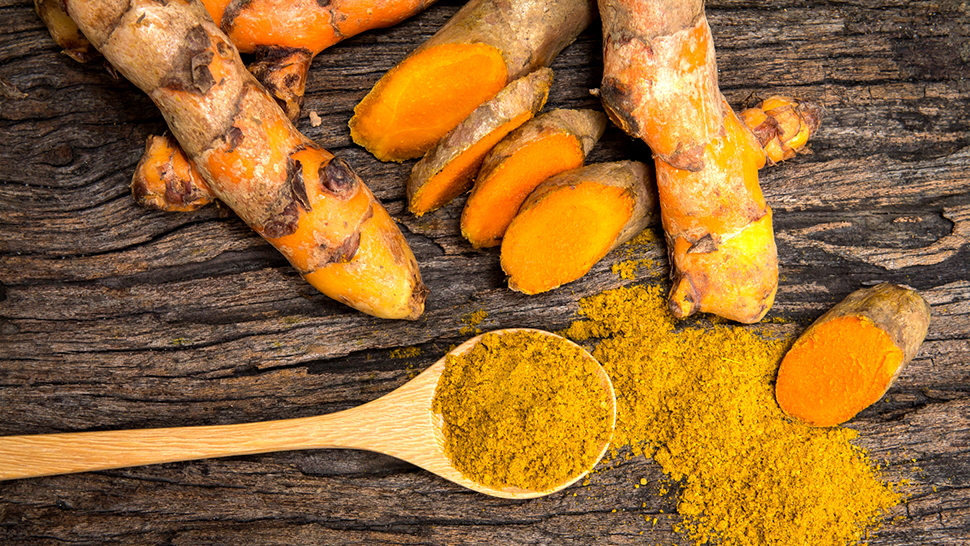
What’s the buzz?
Food as medicine could not be more true for the inflammation-busting spice turmeric.
What does the science say?
Turmeric (pronounced turr-mer-ick) is a knobby, vibrant orange rhizome (an underground stem that resembles a plant’s root) traditionally known for its use in Indian cuisine, giving many dishes a bright yellow color.. Most commonly found in dried and powdered form, turmeric has now made its way into home kitchens around the world and is the darling of many hip cold-pressed juice bars. Thanks to its high concentration of the antioxidant curcumin, turmeric has long been used in Ayurvedic and Chinese medicine for its anti-inflammatory properties. While some of the grandiose claims that turmeric fights inflammatory diseases such as cancer, diabetes, and heart disease better than Western medicine don’t pass muster when reviewing the research, there is some evidence that suggests it may play a role in prevention and treatment of these diseases. Curcumin has been shown to scavenge free radicals (sounds Game of Thrones-ish, doesn’t it?), inhibit the growth of cancerous cells, and reduce risk of heart attack among bypass patients. Emerging research suggests that curcumin may help treat a host of other conditions including inflammatory bowel disease, heartburn, skin conditions, arthritis, and possibly even Alzheimer’s disease.
That said, other research suggests that the hype is not well substantiated. So, where does that leave us?
Although some make it sound like a miracle spice, most of the research relies on turmeric extract (nearly pure curcumin) at much higher doses than your curried cauliflower will provide you. Thus, some health professionals recommend turmeric or curcumin supplements, but research doesn’t support their use. At high doses, turmeric may interfere with some medications; always check with your doctor first before using any supplements.
Beyond any possible health benefits, turmeric adds a warm, earthy flavor and bright yellow color to your meals (in fact, it’s used as a natural food dye!). Find the knobby stems fresh in some produce aisles (don’t mistake it for its cousin, ginger, which has a similar shape and skin) or dried in the spice aisle. Pro tip: turmeric (especially fresh) will stain your clothes, hands, counters, and cutting boards, so put on that apron while cooking with it.
What’s the takeaway?
The healing powers of turmeric may not be as strong as some make them out to be, but adding the spice to your cooking is one way to fight inflammation with your fork with limited downside. Just remember that one rakish rebel of a spice, no matter how potent, won’t undo a poor diet.
Read more:
- The basics
- For the turmeric newbie: 7 ways to Eat (& Drink) Turmeric